What is the Safest City in Southeast Asia in 2025?
Disclaimer: Some links on this page may be affiliate links. If you purchase anything through them, I will receive a small commission at no extra cost to you! Further details in the Privacy Policy.
The safest city in Southeast Asia in 2025 is Singapore. It shares top spot with Thailand’s Chiang Mai based on data from the 2024 safety index. However Singapore is a much safer country than Thailand overall.
Both cities are known for very low crime and being popular amongst expats. Southeast Asia is a very popular region for backpackers and other travellers due to its affordability, relative safety compared to most other global regions and diverse range of activities.
I will cover the safest cities in Southeast Asia according to the safety index. I will only include cities with a safety index rating of at least 60. Then I will explain which other cities I have been to in Southeast Asia and would add to this list.
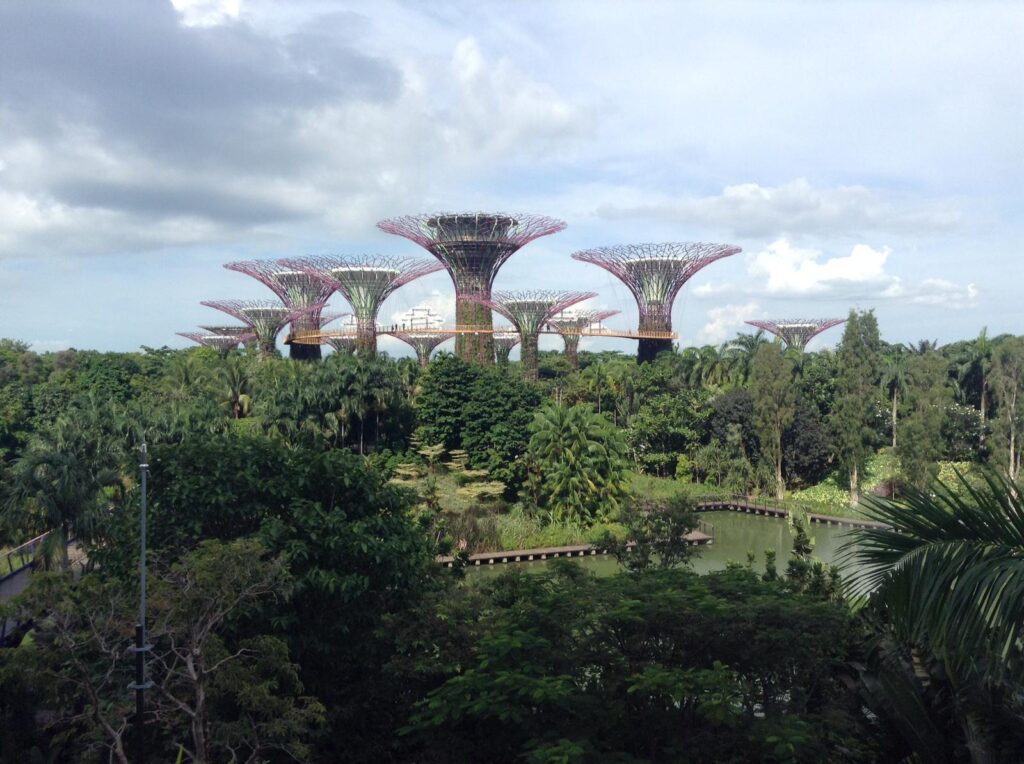
What Metrics Were Used to Determine the Safest Cities in Southeast Asia?
Data was taken from the 2024 safety and crime index with the scores from each index combined to give a total of 100. For example Singapore has a safety rating of 76.5 and a crime rating of 23.5.
Surveys were taken by locals and visitors giving their perception on how safe a city is or isn’t based on personal experience.
I often lean heavily on personal experience when ranking the safety of a place I’ve travelled to. There is no better way of knowing how safe somewhere is than actually being there, getting a feel for it and interacting with locals who have spent many years there.
The surveys included questions on a variety of factors such as safety at both day and night, and risk of muggings, theft and harassment among other crimes.
What are the Safest Cities in Southeast Asia in 2025?
Based on low crime rates, these are the safest cities in Southeast Asia for tourists in 2025:
=1 Singapore (Singapore)
Safety index rating: 76.5
Perhaps unsurprisingly, Singapore tops this list of the safest Southeast Asian cities.
Just to be clear, Singapore is a city-state, therefore “Singapore” is the name of both the country, and the city.
Singapore is famous across the world for being one of the safest cities on the planet. It is notorious for being very strict on crime with very harsh punishments for offenders. In the worst cases, this includes the death penalty. Caning is not uncommon either.
Singapore also has a no-nonsense approach to anything which impacts on the cleanliness of the city. In fact as recently as the day I started writing this post, two Germans were sentenced to caning and prison for 9 months after spraying graffiti on a train.
Additionally, chewing gum is illegal and you can be fined up to 2,000 Singapore dollars (£1,200 or US$1,500) for attempting to sell it. Although possession of a small amount for personal use is overlooked.
That’s how serious they are about keeping everything clean and presentable.
On top of this, Singapore is one of the world’s richest cities. In fact only four cities worldwide have more millionaires (in USD) than Singapore.
One thing I’ve noticed in my travels to over 70 countries is that the safest places by far are the ones with both a rich population, and very strict punishments for criminals. Brunei, the UAE and Saudi Arabia are similar to Singapore in this sense.
Singapore will be topping safety rankings for many more years to come.
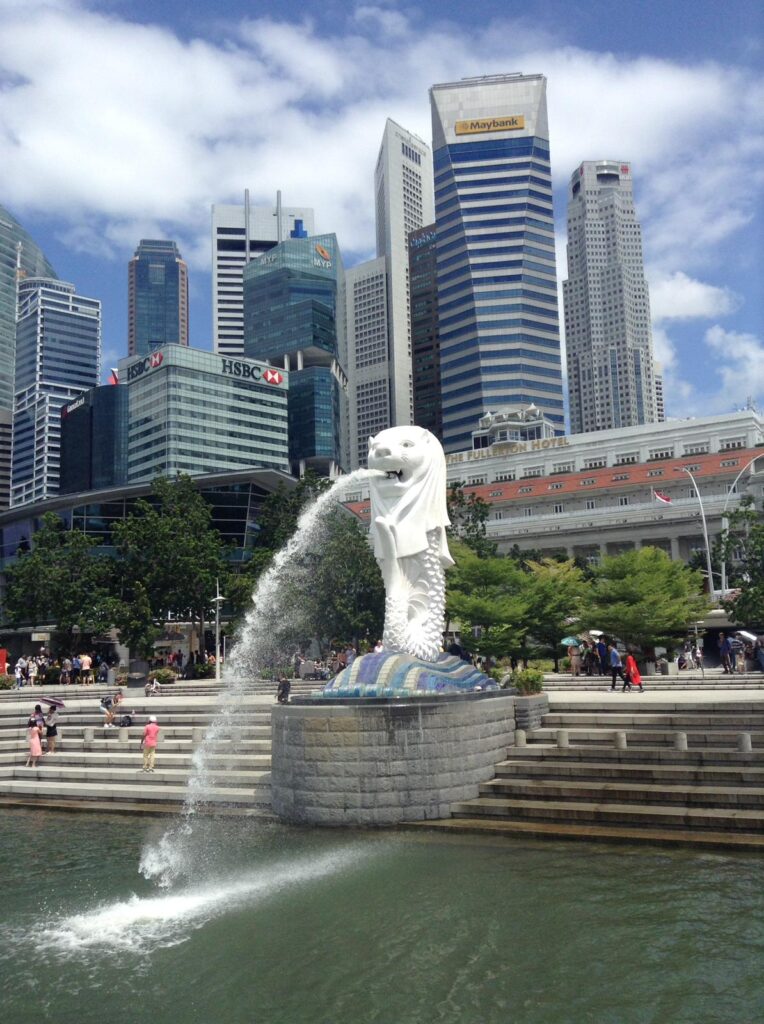
=1 Chiang Mai (Thailand)
Safety index rating: 76.5
Joining Singapore at the top of the safety index is Chiang Mai, a popular city in northern Thailand.
Chiang Mai has gained popularity in recent years for being a major digital nomad destination. People from across the world flock to Chiang Mai to work from their computers, and a burgeoning expat community has developed.
Why Chiang Mai over other cities in Thailand or elsewhere in Southeast Asia? Well, safety is a major factor.
Chiang Mai is also a much more laid-back city than the likes of Bangkok, Pattaya and Phuket which are famous (or should that be infamous?) for their wild parties.
Where partying is commonplace, anti-social behaviour is never far behind, and Chiang Mai avoids a lot of that by being more relaxing.
The locals are also overwhelmingly Buddhist, and Buddhism is a religion which promotes peace.
Poverty is another factor that often has links to crime. And Thailand is a country with a lot less poverty than its neighbours on Mainland Southeast Asia. Of the 10 countries in the region belonging to the Association of Southeast Asian Nations (ASEAN), only Malaysia and regional heavyweights Singapore and Brunei have a higher GDP per capita than Thailand.
Therefore Thai cities are on average a lot safer than regional rivals such as Phnom Penh or Ho Chi Minh City for example.
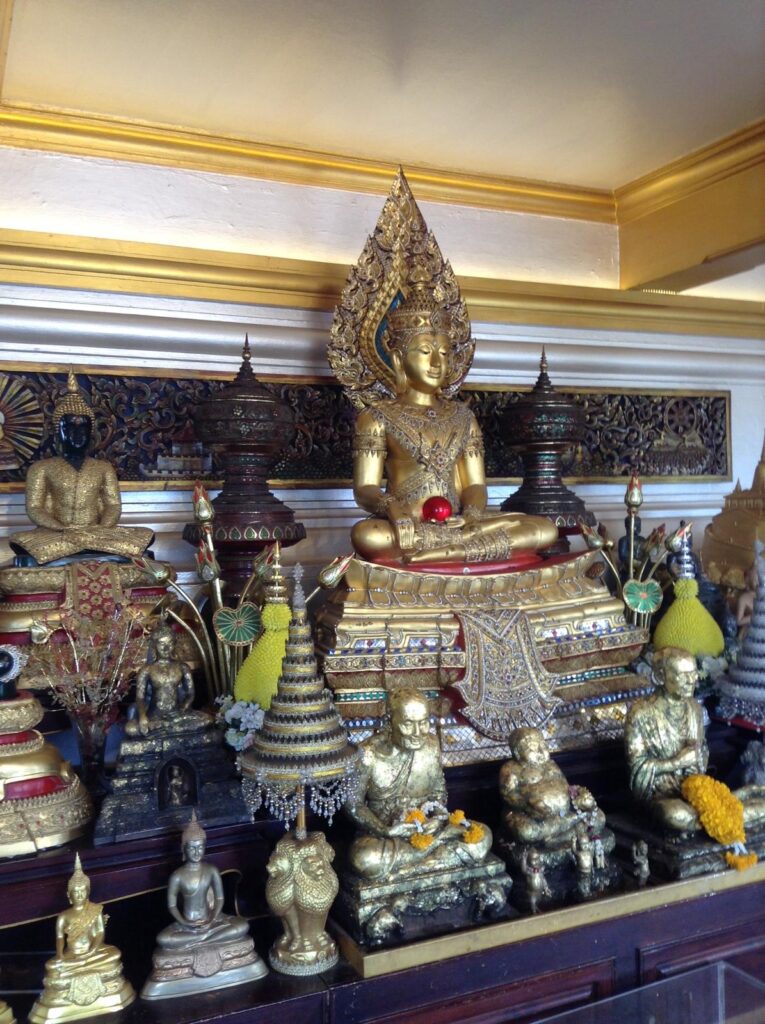
3 Davao (Philippines)
Safety index rating: 72.5
Third in the safety index is a bit of a surprise if you aren’t familiar with Davao City but are aware of what’s been taking place on the island of Mindanao, which Davao is located on, in recent years.
Mindanao is an island in the Philippines, and it has suffered from a violent insurgency which has led to numerous terror attacks. However, I have two bits of good news.
Firstly, Davao is several hours away from where much of the conflict occurred. Secondly, the insurgency has been coming to an end in the past few years, making Mindanao much safer than it was. The security situation in the area is a lot more stable now.
Many decades ago, Davao was a conflict zone. However the election of Rodrigo Duterte as mayor saw Davao go from one of the Philippines’ most dangerous cities to one of the safest. Duterte’s hardline approach to crime saw him elected president later on.
The city has a large armed police presence on the streets, which locals say has acted as a deterrent to crime.

4 Penang (Malaysia)
Safety index rating: 68.7
Now one drawback of using statistics to determine Southeast Asia’s safest cities is that… not all entrants on the list are actually cities…
Penang is a state in Malaysia, split between Penang Island and Seberang Perai. The state capital is George Town, which is a UNESCO World Heritage Site known for its colonial architecture from the days of British Malaysia, and its history as a key trading post.
Malaysia is a pretty safe country anyway, and Penang is one of the safest places in Malaysia.
Locals find it safe, and there are always police nearby looking out for any issues. It’s even okay to go out at night here, which isn’t the case in every part of the world.
A bit of common sense and you won’t have any issues here. Here are some travel safety tips that will keep you safe. The guide is written towards solo travellers, but most of those tips are valid for anyone.

5 Hanoi (Vietnam)
Safety index rating: 64
The capital of Vietnam is crazy and a massive culture shock if you aren’t used to Southeast Asia, but it is at least safe in terms of crime.
Hanoi is a very busy city, so you do need to keep an eye out for pickpockets, but it’s also a place where you can walk alone at night and it feels very safe to do so.
I would say the biggest danger here is the traffic. Vietnam has a massive motorbike culture, and in the busiest parts of Hanoi, you will see hundreds zipping past every minute of the day.
You will need to observe locals and mirror their movements to cross the road here. After a while you will learn how to do it yourself, but it does take some practice.
Hanoi is far safer than Vietnam’s other major metropolis Ho Chi Minh City (formerly Saigon).
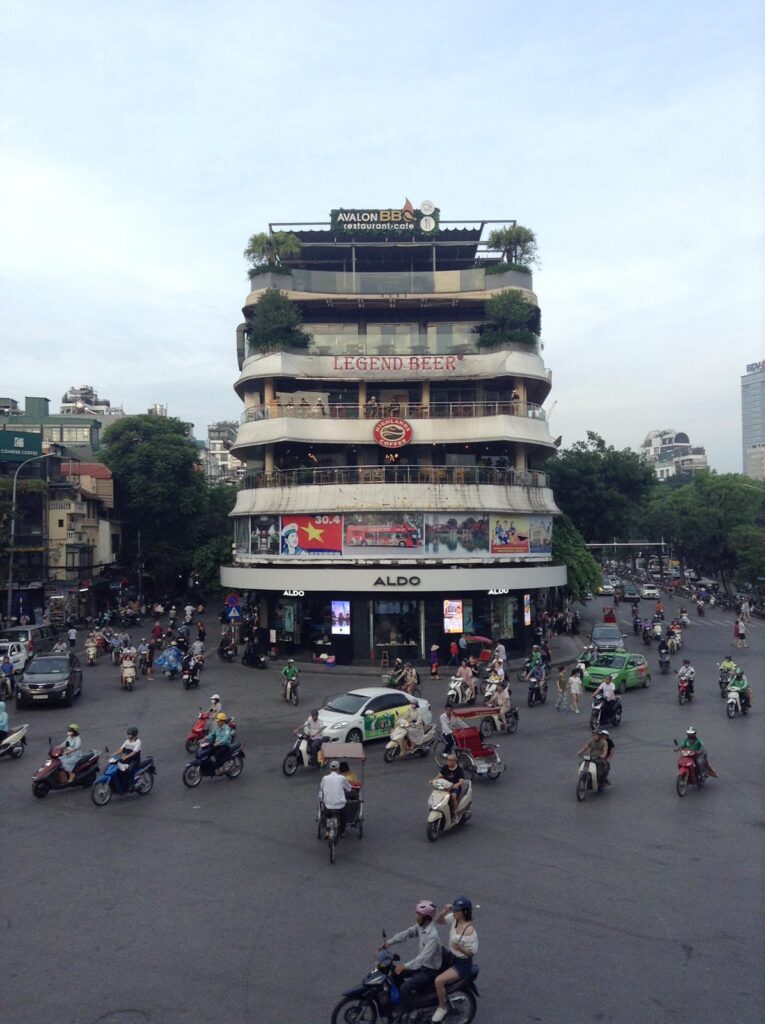
6 Makati (Philippines)
Safety index rating: 61.3
Makati is a city in Metropolitan Manila, and the leading financial hub in the Philippines. The Filipino Canary Wharf or Wall Street, so to speak.
As you can imagine, the country’s main money powerhouse is an area that mostly attracts which people. And as mentioned earlier, more wealth in an area generally leads to a safer environment, which is exactly the case in Makati.
It’s important not to confuse Metropolitan Manila, with Manila the capital city, which I wasn’t a big fan of in all honesty. Manila is dirty, chaotic and didn’t feel safe, especially in crowded market areas.
Makati however is much safer.
That isn’t to say that it has no issues whatsoever. Like most major cities across the world, pickpocketing does occur and you should keep a close eye on your valuables to prevent it.
Also, do not use street taxis. Instead use Grab (the Southeast Asian equivalent of Uber) and you should be okay. Grab takes payment via the app and routes are tracked, meaning there is no temptation for the driver to scam you.
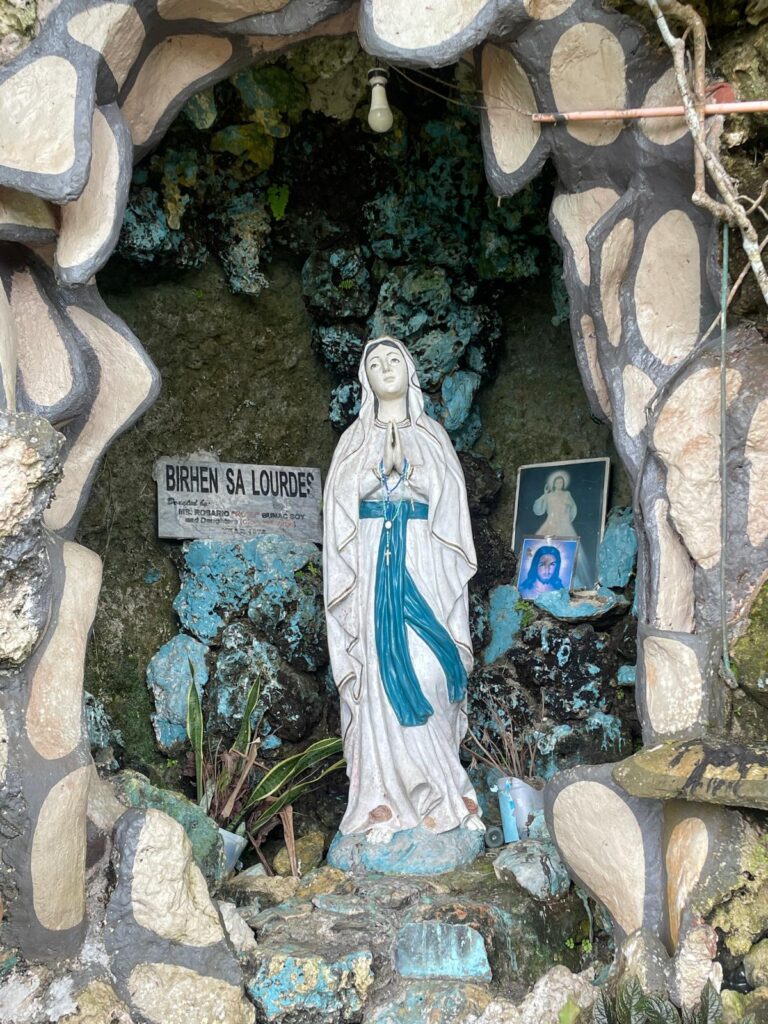
7 Bangkok (Thailand)
Safety index rating: 60.2
Coming in 7th place on the safety index is Thailand’s capital, Bangkok. Now Bangkok is a city with its ups and downs. It’s a lot more chaotic than Chiang Mai and has a big backpacker party scene.
However it does at least feel much safer than most major cities in Western Europe such as Paris or London for example.
Violent crime is not an issue in Bangkok unless you go looking for trouble. There is a big culture of collectivism in Thailand. This means if you get into an altercation with a local, expect others to side with your opponent as Thais will generally back their own communities in most instances.
In reality, the only likely route in which you may experience violence, is by drinking too much alcohol and ending up in a hostile situation. Be responsible and you should be fine.
Like Hanoi, Bangkok’s biggest issue is really the traffic. There are many motorbikes in Bangkok (albeit not as many as you’d find in Hanoi) and a lot of them will dart off the roads and onto the pavements without warning. Be wary of this as you walk down the streets.

Which Other Southeast Asian Cities are Safe to Visit?
I would say that just basing safety off statistics is flawed in many ways. There are cities not featured in the data which are very safe to visit. There are others which score very poorly on the data which are also very safe in reality.
One example of a super safe city in the region which the index doesn’t cover is Bandar Seri Begawan, the capital of Brunei.
Brunei is a lesser-known country which rarely features in global statistics, despite being one of the safest countries in the region by far.
Brunei is a very strict Islamic country with Sharia law that involves harsh punishments should you break it. Brunei is also a very rich country, mostly due to its oil supplies. Whilst Singapore gets all the credit for being a safety powerhouse in SE Asia, Brunei is on a pretty similar level in terms of very low crime.
There are few cities I’ve been to across the globe which felt safer than Bandar Seri Begawan. Just watch out for the crocodiles and monkeys! The wildlife in the surrounding jungles is the only real safety threat of any sorts here.
Another very safe city is Kuala Lumpur, the Malaysian capital. I talked about very safe cities which score poorly on the safety index, and Kuala Lumpur is exactly what I was referring to.
It somehow ranks 15th of 16 cities in the index, with a score of 38.2. Corruption is the biggest concern of people here, with theft also a worry. Yet I have been in few cities in my travels to 70+ countries that felt as safe as Kuala Lumpur did.
It feels very much like Singapore on a budget. A (mostly) clean and very modern city with a lot of skyscrapers. It attracts many tourists and business travellers alike.
Even in Myanmar, a country known for conflict and civil war, I found the major tourist cities to be very secure.
Despite the scary travel warnings, Myanmar is safe to visit if you take the right precautions. In the major cities such as Yangon and Mandalay, crime is minimal, and the conflict won’t affect you (it takes place mostly in the north and around border regions).
Myanmar has a strong Buddhist culture where the locals are always happy to help. I would say that the real dangers in Yangon and Mandalay came from rats, rabid dogs and numerous holes in the ground which become a problem when combined with regular electrical blackouts. But crime is very low.

Are There Other Factors Which Should be Used to Measure Southeast Asia’s Safest Cities in 2025?
My biggest criticism of the data used in the safety index is that it focuses solely on crime. And it’s not the only culprit. Look up any list of the world’s safest countries and you will see Iceland and Japan right at the top. Both of those countries have very low crime rates. Yet both are also highly susceptible to natural disasters such as earthquakes and volcanic eruptions.
Let’s have a look at a few other safety factors to consider when determining Southeast Asia’s safest city:
Natural Disasters
Natural disasters can pose a far greater risk to your safety than crime in some places, especially in parts of Southeast Asia. The Philippines and Indonesia both lie in the Pacific Ring of Fire, which is where most of the world’s tectonic activity takes place.
Myanmar, Thailand, Malaysia and Indonesia were all hit hard by the 2004 Boxing Day Tsunami. The popular Thai city of Phuket was hit heavily, so don’t think losing your phone is the only issue you may face out there.
Indonesia was hit the hardest of all and the city of Banda Aceh lost 60,000 people, which was a quarter of its entire population at the time.
Nowadays, the Aceh province is known for being a very strict region of Indonesia with Islamic law in place, similar to Brunei in some ways. As a result it is very safe in terms of crime. Yet a quarter of the entire Banda Aceh population lost their lives in a single day.
Does that sound like a safe city to you?
Don’t underestimate natural disasters on your travels. Research the best times to visit places (to avoid typhoon season for example), and find out from locals what sort of warning systems are in place in case of emergencies.
Diseases
Southeast Asia is a tropical region which means it is at risk of many diseases, including several from mosquitos such as malaria and dengue fever.
Fortunately, your chances of picking up such nasty illnesses are a lot lower in the cities. But that doesn’t mean they are non-existent.
Research whether or not your travel destination has issues with mosquitoes, and wear long sleeves and trousers to avoid bites. Also spray some repellent on. I use DEET spray which is pretty strong and you need to keep it away from your eyes and mouth. But it’s strong for a reason, and minimises your risk of being bitten.
Elsewhere, waterborne diseases are prevalent in parts of Southeast Asia. Hepatitis A and typhoid are amongst the most common. Tap water is generally safe to drink in Singapore, Brunei and parts of Malaysia including Kuala Lumpur.
But in most cities you should drink from a filtered water bottle, or boil water before drinking it.
Food hygiene is also important. Avoid undercooked meats and fruit that may have been washed with dirty water.
Traffic
Perhaps the biggest danger of all in most Southeast Asian cities is the traffic. As I talked about in the Hanoi and Bangkok sections earlier, it can be crazy. And accidents are common.
Whilst cities are generally safer than rural areas when it comes to diseases, the traffic is often a greater risk due to the sheer numbers of vehicles racing around.
Always observe how locals cross the road, and mirror their movements until you’re confident enough to cross alone. You will get used to it eventually!
Singapore and Brunei have very low road accident rates, whereas Thailand and Vietnam have the highest in the region and require a lot more care.
